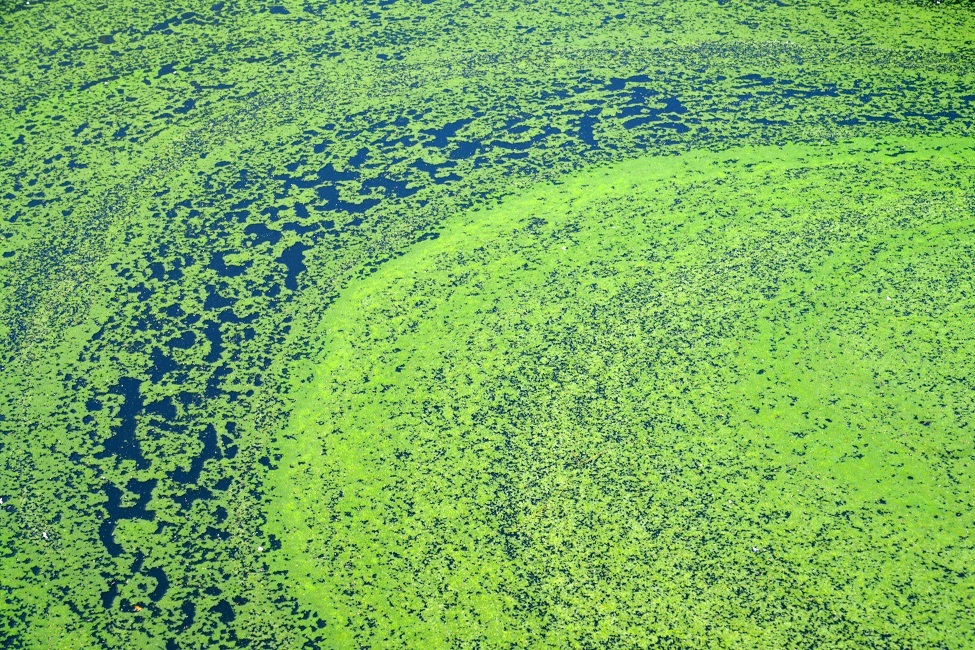FAU Engineering Develops New Weapon Against Harmful Algal Blooms

As harmful algal blooms (HABs) continue to spread across the globe, urgent research is needed to address this growing threat. Studies in Italy, China, and the Atlantic basin have shown that many water bodies have high nitrogen-to-phosphorus ratios, making phosphorus a key factor that drives these blooms. This highlights the critical need for more effective phosphorus management strategies to curb the rise of HABs and protect our ecosystems.
Recently, there’s been a growing interest in finding useful ways to repurpose troublesome algal biomass, which could be turned into valuable products like bioplastics, biofertilizers, and biofuels. Researchers have already explored using algal biomass to create materials that can help clean up things such as heavy metals, rare earth metals, dyes, and even capture CO2 and harmful volatile organic compounds from the air.
However, few studies have looked into how algal biomass, especially cyanobacteria, also known as blue-green algae, can be used to create materials that remove phosphate from water.
Now, researchers from the College of Engineering and Computer Science at Florida Atlantic University, have filled that gap by transforming cyanobacterial biomass, which is typically a hazardous waste, into custom-made adsorbent materials that can pull harmful phosphorus out of water. A d sorbent materials are substances that can attract and hold molecules or particles such as gases, liquids, or dissolved solids on their surface. Unlike a b sorbent materials that soak up substances into their structure, a d sorbents capture molecules on the outside surface, forming a thin layer.
To convert algal biomass into chemically modified activated carbon adsorbent materials for phosphate removal, researchers collected cyanobacterial biomass from Florida’s Lake Okeechobee and processed before activation using fast and energy-efficient microwave heating. To improve phosphate removal from water, researchers tested adsorbent materials modified with lanthanum chloride or zinc chloride. Relatively abundant, lanthanum is a metal that is part of the rare-earth element group. Both compounds are useful in a variety of fields including environmental cleanup, industrial processing, and chemical manufacturing. Previous research did not identify any human health risks associated with the use of lanthanum for phosphorus removal.
Results of the study, published in the journal Algal Research, show that materials treated with lanthanum chloride removed more than 99% of phosphorus, even at starting phosphorus concentrations as high as 20 milligrams per liter of water. The best material could be synthesized in three minutes and successfully achieved 90% phosphorus removal efficiency with a low amount of material (0.2 gram per liter of contaminated water) and just 30 minutes of contact time. This material also performed well in the presence of natural organic matter by selectively removing phosphorus.
The study suggests that lanthanum-modified algae-based adsorbents could help reduce HABs by removing phosphorus from water. The effectiveness comes from the formation of a compound, LaPO4.H2O (also known as rhabdophane), which traps phosphorus permanently.
“Our findings suggest that lanthanum-modified algae-based materials could be an effective solution for removing phosphorus and preventing harmful algal blooms if used on a larger scale,” said Masoud Jahandar Lashaki, Ph.D., senior author, assistant professor and graduate program director/coordinator in FAU’s Department of Civil, Environmental and Geomatics Engineering. “By using readily available waste materials like algal biomass, combined with lanthanum, an element known for its strong phosphorus-binding capabilities, we have developed an adsorbent that can effectively target and remove excess phosphorus from water. Phosphorus is a major contributor to the occurrence of harmful algal blooms, which can lead to toxic water conditions, loss of aquatic life, and significant economic impacts on industries like fishing and tourism.”
Results of this study show the promise of this innovative approach in addressing one of the most pressing challenges in water quality management. With further refinement and scalability, this technique could become an essential tool for managing nutrient pollution and preserving aquatic ecosystems globally.
“Our team’s research highlights the high efficiency of these materials in removing phosphorus over a wide range of concentrations. This approach could provide an environmentally friendly and cost-effective solution to mitigate the effects of eutrophication – the process where excessive nutrients, particularly phosphorus, fuel the growth of harmful algae in lakes, rivers, and coastal areas,” said Stella Batalama, Ph.D., dean, FAU College of Engineering and Computer Science. “By applying lanthanum-modified algae-based materials in regions prone to harmful algal blooms, communities could significantly reduce the occurrence of these blooms, improving water quality, protecting ecosystems, and ensuring safe water for both human use and wildlife.”
Study co-authors are Vithulan Suthakaran, a civil engineer and doctoral candidate in FAU’s College of Engineering and Computer Science; Ryan Thomas, an environmental engineer and FAU graduate; Mitchell Guirard, an environmental engineer and FAU graduate; and Daniel Meeroff, Ph.D., professor and dean of undergraduate studies, FAU Department of Civil, Environmental and Geomatics Engineering.
This research and publication were developed under Project INV12 and funded by the Florida Department of Environmental Protection (FDEP) under the direction of the Blue-Green Algae Task Force. The research team recently received a Phase-II grant ($590,527; INV45) from the FDEP to investigate the scalability of the proposed solution.

-FAU-
Latest News Desk
- FAU Celebrates Summer 2025 GraduatesFlorida Atlantic University conferred nearly 1,800 degrees over the course of three in-person commencement ceremonies in the Carole and Barry Kaye Performing Arts Auditorium.
- 'Virtual' Socializing Greatly Eases Isolation in Seniors with DementiaResearchers analyzed 1,900 virtual events to find the best indicator of social engagement in older adults with dementia. Group dynamics - more than individual traits - drove connection and eased isolation.
- Could Nanotechnology Spark Elementary Students' Curiosity in Science?FAU College of Education researchers have turned to nanotechnology - an increasingly relevant and multidisciplinary field - to cultivate critical thinking and decision-making skills in elementary students.
- FAU Publishes Initial Annual Report: Florida Office of Ocean EconomyHoused at FAU, the Florida Office of Ocean Economy was created to position the state as a global leader in ocean-linked industries and to build the foundation for a thriving ocean economy.
- FAU Professor Highlighted for Park Designed for Coastal ResiliencyJeffrey E. Huber, professor in the School of Architecture within the Dorothy F. Schmidt College of Arts and Letters at Florida Atlantic, was recently featured in Architectural Record magazine for a park.
- FAU Foundation Raises $72M in 2025 Fiscal YearThe Florida Atlantic University Foundation (FAUF) raised more than $72.5 million from nearly 11,000 donors at the end of the 2025 fiscal year - the second largest amount raised in the university's history.






